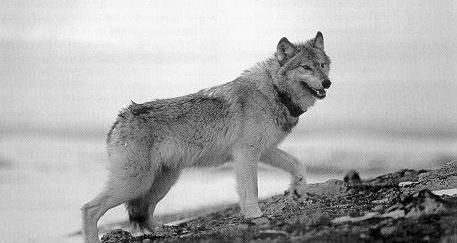|
You are viewing ARCHIVED content published online before January 20, 2025.
Please note that this content is NOT UPDATED, and links may not work. For current information,
visit https://www.nps.gov/aboutus/news/index.htm.

NPS Photo
Contact: Pat Sanders, 907-547-2233 Contact: John Burch, 907-644-3574 The latest data from a two-decade-long wildlife study in Yukon-Charley Rivers National Preserve reports a healthy and rebounding wolf population.Wolf abundance and distribution has been monitored in the 2.5 million acre national preserve since 1993 using radio collars on animals within most of the packs using the area. No wolf study in Alaska, other than one at Denali National Park, has been in place for more years. 'Wolves depend on healthy populations of large ungulates, like caribou, which in turn respond to vegetation, weather and other habitat patterns across the landscape,' said Tom Liebscher, chief of resources for Yukon-Charley Rivers. 'These data give us insight into what's happening across a large range of resources, as well as help other agencies make informed management choices.' A separate Alaska Department of Fish and Game study of the Forty Mile Caribou Herd, a primary food source for the Yukon-Charley wolves, shows a population of 51,000 - a 50-year high. When the wolf study began in 1993, the herd numbered about 21,000 animals. Liebscher said that across 18 years of collar data, there appears to be little correlation between the size of the caribou herd and the number of wolves in the preserve, adding that factors such as winter weather, range condition and predators outside the preserve have a significant effect on the caribou population. The 2011 annual report notes that wolf density was above the 18-year average (5.09 wolves/1000 square kilometers versus an average of 4.23) and that the mean pack size was 7.4 wolves. Pack sizes have fluctuated over the 18-year study, from a low of 4.3 to a high of 9.1, and average 7.1 over the length of the study. Currently, nine packs are tracked by the National Park Service; pack sizes range from one to 18 wolves. In 2010, the total population ranged between 58 animals in the spring and 74 animals in the fall. Since 1993, National Park Service scientists have been able to determine the fate of 139 wolves collared in the preserve, creating a snapshot indicative of wolves throughout Interior Alaska. Fully 30 percent of the collared wolves (42) dispersed from the preserve where they were no longer tracked. A quarter of the collared wolves (33) were trapped or shot in or near the preserve, either by hunters, trappers or in State of Alaska sponsored predator control programs. Some wolves (23 animals/17%) were killed by other wolves, and a few (6 animals/4%) were killed by prey. Only six wolves (4%) died of starvation, and 7% died from unknown natural causes. Researchers lost contact with 20 wolves, either from failed collars or dispersal. State-sponsored predator control outside the preserve but within the area used by the Forty Mile Caribou Herd has varied considerably over the years, and is expected to resume later this month. 'Over time, the State has generally avoided wolves collared by the National Park Service,' said Yukon-Charley Rivers Superintendent Greg Dudgeon. 'The American taxpayer's investment in research - more than $100,000 a year - has benefited from this practice not only financially but by providing land managers with important information that in turn helps hunters and other preserve users.' The full report is available on-line at https://www.nps.gov/yuch/naturescience/wolves.htm |
Last updated: April 14, 2015
